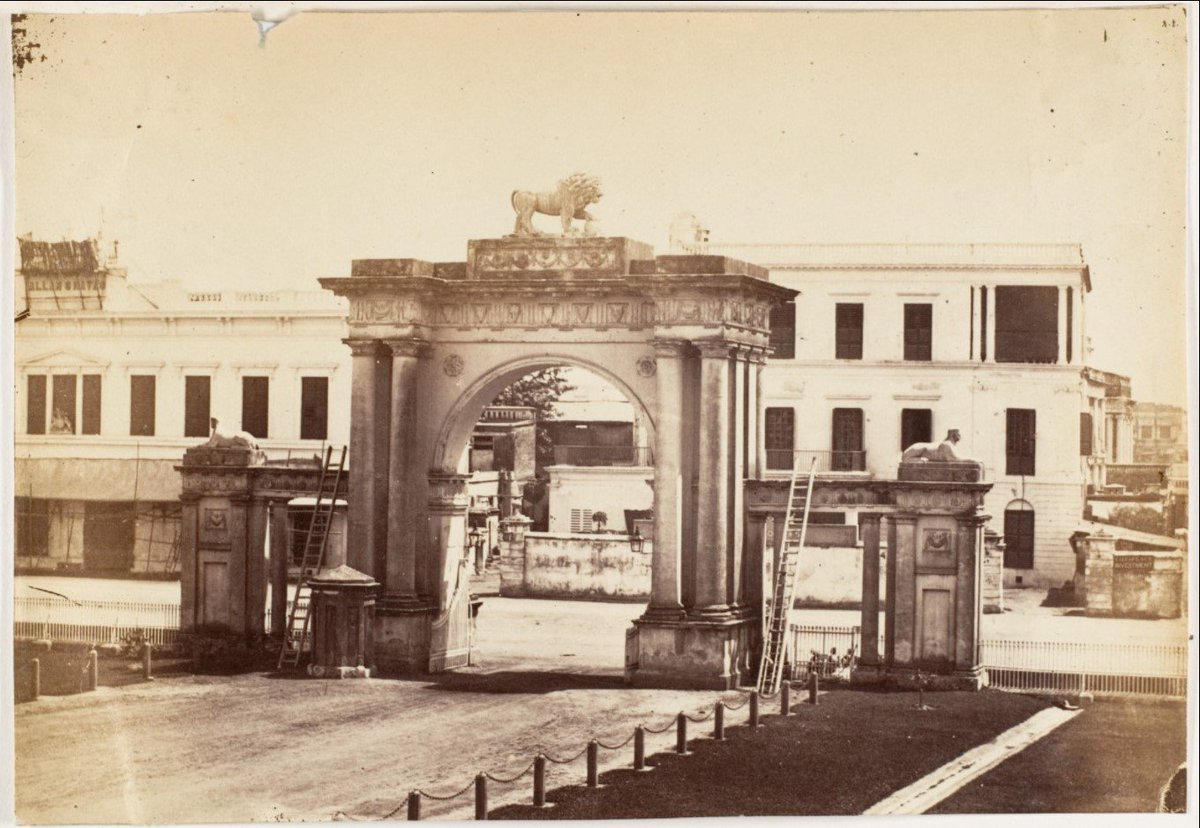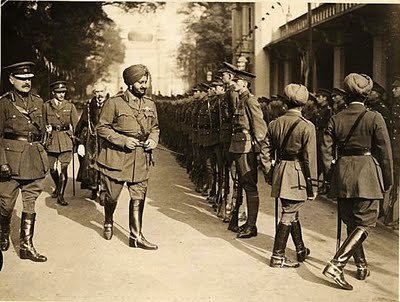Lt. C.H. Mecham (centre) and Lt. Surgeon Anderson (seated, right), of the British Hodson's Horse cavalry regiment, in India during the Indian Rebellion (also known as the Indian Mutiny) of 1857. The regiment was raised in specific response to the rebellion. (Photo by Henry Guttmann/Hulton Archive/Getty Images)
Monday, December 26, 2016
1857
Lt. C.H. Mecham (centre) and Lt. Surgeon Anderson (seated, right), of the British Hodson's Horse cavalry regiment, in India during the Indian Rebellion (also known as the Indian Mutiny) of 1857. The regiment was raised in specific response to the rebellion. (Photo by Henry Guttmann/Hulton Archive/Getty Images)
Tuesday, December 20, 2016
Young Nawab of Bahawalpur
Mian Sadiq Muhammad Khan, Nawab of Bahawalpur (1862-1899).
Bahawalpur, located in Pakistan, was controlled by the descendents of the Daudputra family. Sir Sadiq Muhammad Khan (1862-99) succeeded as Nawab of Bahawalpur in 1866.
While he was a minor the affairs of state were administered by British officers. He was created a Knight Grand Commander of the Most Exalted Order of the Star of India in 1880. Sadiq Muhammad Khan's administration developed a canal system to improve irrigation and established a better public education system.
Saturday, November 12, 2016
Friday, October 14, 2016
Wednesday, October 12, 2016
Wednesday, September 14, 2016
Tuesday, September 13, 2016
Friday, September 9, 2016
Monday, September 5, 2016
Thursday, September 1, 2016
Wednesday, August 24, 2016
Wednesday, August 17, 2016
Wednesday, July 20, 2016
Monday, July 18, 2016
Wednesday, July 6, 2016
Monday, July 4, 2016
Tuesday, June 28, 2016
Friday, June 24, 2016
Wednesday, June 8, 2016
Saturday, June 4, 2016
Tuesday, May 24, 2016
Friday, May 6, 2016
Wednesday, April 6, 2016
Tuesday, March 22, 2016
Thursday, March 17, 2016
Wednesday, March 16, 2016
Wednesday, February 24, 2016
Wednesday, February 3, 2016
Monday, January 11, 2016
Historical Temple turned Bathing Place
Ancient submerged temple at Manasbal, a site supposed to be maintained by state government has been reduced to washing and bathing by the locals.
Ram Chandra Kak writes in his 1933 book Ancient Monuments of Kashmir:(read the complete book here http://koausa.org/Monuments/ )
"One of the most attractive places in the valley is the Manasbal lake. Being absolutely free from disturbance of any kind, and nestling in an oval basin surrounded on all sides by hills and uplands, the lake is an ideal abode for the happy lotus-eater, who dreams away his days reclining under the shady chinar, and passes his evenings in watching the long streaks of moonlight flitting across the mirror-like surface of the water. Naturally, such a delightful spot would not have been overlooked either by the devout Hindu or the nature- adoring Mughal. The former have left a small temple, now partially submerged during the greater part of the year. It is a very small structure, and only its two pyramidal roofs are visible in the driest seasons. The cornice of the lower roof, and the horizontal band which divides it from the upper storey, are decorated with series of dentils and metopes. Only the upper part of the pediment of the entrance is visible. It faces west."
Note on the temple by Pandit Anand Koul from his book 'Archaeological Remains In Kashmir' (1935) . You can read the complete book here: http://www.searchkashmir.org/…/archaeological-remains-in-ka…
Miniature Temple at Manasbal
At the south-east cornner of the lake of Manasbal is a miniature temple built of stone, standing in the water.
The temple appears to be a square of about six feet and has only one doorway to the west covered by a pyramidal pediment, which is divided into two portions by a horizontal return of the said mouldings as in the case of the Martanda colonnade. The upper portian is occupied by the head and shoulder of a figure holding a sort of staff in the left hand. The angles of the lower portion of the doorway pediment, below the horizontal moulding and above the trefoil, are occupied each with a naked figure leaning against the head of the trfoil, and holding up over the arch a sort of waving scarf which is passed on through the other hand.
Pic-1 to 3 Current pics
Pic - 4 1930s when the temple was not submerged
Subscribe to:
Comments (Atom)

































